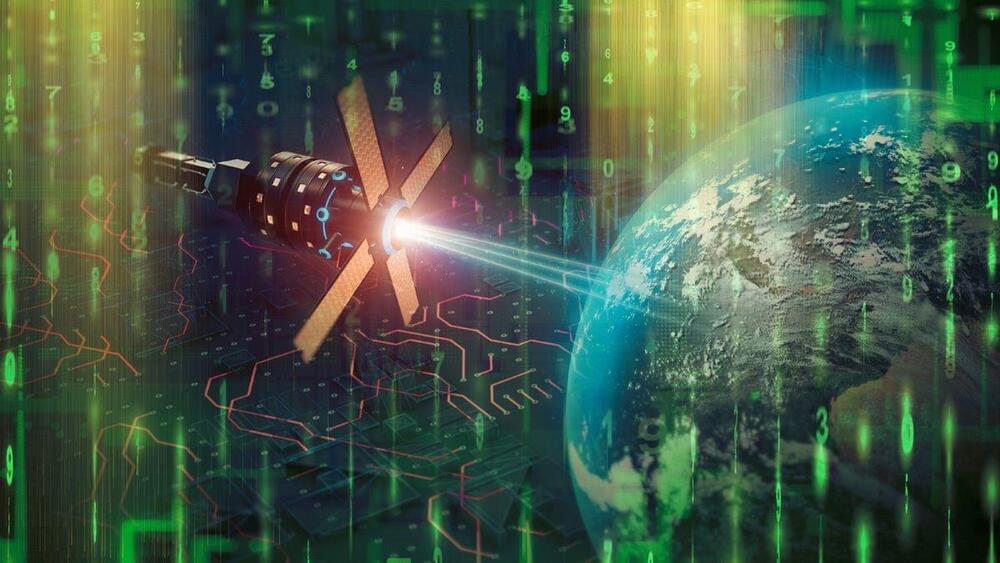It was already on the way out due to cost. AI just sped it all up.
In an AI world, job applicants’ actual skill sets will matter more than diplomas, LinkedIn says.


NASA will begin a new RS-25 test series Oct. 5, the final round of certification testing ahead of production of an updated set of the engines for the SLS (Space Launch System) rocket. The engines will help power future Artemis missions to the Moon and beyond.
A series of 12 tests stretching into 2024 is scheduled to occur on the Fred Haise Test Stand at NASA’s Stennis Space Center near Bay St. Louis, Mississippi. The tests are a key step for lead SLS engines contractor Aerojet Rocketdyne, an L3Harris Technologies company, to produce engines that will help power the SLS rocket, beginning with Artemis V.
“NASA and our industry partners continue to make steady progress toward restarting production of the RS-25 engines for the first time since the space shuttle era as we prepare for our more ambitious missions to deep space under Artemis with the SLS rocket,” said Johnny Heflin, liquid engines manager for SLS at NASA’s Marshall Space Flight Center in Huntsville, Alabama. “The upcoming fall test series builds off previous hot fire testing already conducted at NASA Stennis to help certify a new design that will make this storied spaceflight engine even more powerful.”



That looks promising. 90% accuracy isn’t bad. Now the trick is getting there though we have options on our own solar system possibly. You never know until you try. I doubt we’ll find high level life remnants but perhaps something much less like at most insect level but more likely microbial. I’m just guessing of course.
A team of scientists supported in part by NASA have outlined a simple and reliable method to search for signs of past or present life on other worlds that employs machine learning techniques. The results show that the method can distinguish both modern and ancient biosignatures with an accuracy of 90 percent.
The method is able to detect whether or not a sample contains materials that were tied to biological activity. What the research team refers to as a “routine analytical method” could be performed with instruments on missions including spacecraft, landers, and rovers, even before samples are returned to Earth. In addition, the method could be used to shed light on the history of ancient rocks on our own planet.
The team used molecular analyses of 134 samples containing carbon from abiotic and biotic sources to train their software to predict a new sample’s origin. Using pyrolysis gas chromatography, the method can detect subtle differences in a sample’s molecular patterns and determine whether or not a sample is biotic in origin. When testing the method, samples originating from a wide variety of biotic sources were identified, including things like shells, human hair, and cells preserved in fine-grained rock. The method was even able to identify remnants of life that have been altered by geological processes, such as coal and amber.

Have you ever wondered if the Earth has a heartbeat? Well, it turns out that our planet does pulsate every 26 seconds, and scientists have no idea why.
This mysterious phenomenon has been detected by seismometers across the world for more than half a century, but its origin and meaning remain unknown.


“Wish I had this to cite,” lamented Jacob Andreas, a professor at MIT, who had just published a paper exploring the extent to which language models mirror the internal motivations of human communicators.
Jan Leike, the head of alignment at OpenAI, who is chiefly responsible for guiding new models like GPT-4 to help, rather than harm, human progress, responded to the paper by offering Burns a job, which Burns initially declined, before a personal appeal from Sam Altman, the cofounder and CEO of OpenAI, changed his mind.
“Collin’s work on ‘Discovering Latent Knowledge in Language Models Without Supervision’ is a novel approach to determining what language models truly believe about the world,” Leike says. “What’s exciting about his work is that it can work in situations where humans don’t actually know what’s true themselves, so it could apply to systems that are smarter than humans.”

SAN FRANCISCO/WASHINGTON, Oct 5 (Reuters) — OpenAI, the company behind ChatGPT, is exploring making its own artificial intelligence chips and has gone as far as evaluating a potential acquisition target, according to people familiar with the company’s plans.
The company has not yet decided to move ahead, according to recent internal discussions described to Reuters. However, since at least last year it discussed various options to solve the shortage of expensive AI chips that OpenAI relies on, according to people familiar with the matter.
These options have included building its own AI chip, working more closely with other chipmakers including Nvidia and also diversifying its suppliers beyond Nvidia (NVDA.O).

LOS ANGELES — Northrop Grumman will drop plans to develop its own commercial space station and instead assist a competing effort led by Voyager Space, the companies announced Oct. 4.
Under the new partnership, the companies will cooperate on the development of fully autonomous docking systems for Northrop’s Cygnus cargo spacecraft, allowing it to dock with Voyager’s Starlab space station. The companies also said they will “further explore opportunities to strengthen the development of Starlab” that could include Northrop providing engineering design services for that station. Ars Technica first reported about a potential partnership between the companies.
“This collaboration is a major step forward for the Starlab program,” said Dylan Taylor, chairman and chief executive of Voyager Space, in a statement. “Northrop Grumman’s technical capability and proven success in cargo resupply services will play a pivotal role as we accelerate Starlab’s development.”